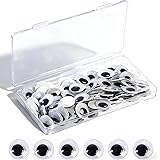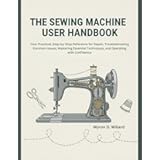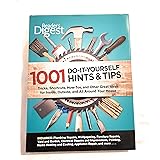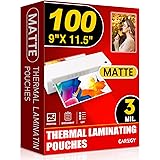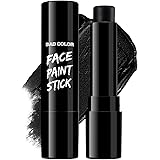Unlocking Creativity: 19 Ingenious DIY Kids’ Toys You Can Craft Today
Ever wonder if fostering a child’s imagination and fine motor skills could be as simple as raiding your pantry or recycling bin? The captivating video above showcases a treasury of DIY kids’ toys, demonstrating how everyday items can be transformed into wonders for young minds. Crafting homemade playthings isn’t just a cost-effective alternative to store-bought options; it’s a profound journey into creative development for both parent and child, akin to an alchemist turning lead into gold.
This approach to play encourages resourcefulness and problem-solving, teaching children that value can be found in unexpected places. Furthermore, these projects often lead to unique toys tailored perfectly to a child’s evolving interests. Let’s delve deeper into the magic behind creating these imaginative play tools, expanding on the fleeting glimpses from the video to provide actionable insights for your next family crafting session.
Transforming Household Staples into Playtime Wonders: The Art of Homemade Kids Toys
The beauty of crafting homemade kids toys lies in the simplicity and accessibility of materials. Just as a chef creates a gourmet meal from basic ingredients, parents can conjure hours of fun from items already present in their homes. This often involves repurposing things destined for the recycling bin, adding an eco-friendly dimension to your family’s playtime.
Consider the humble cardboard, a material highlighted in the video. It’s a versatile canvas, a veritable blank slate for architectural marvels, vehicle prototypes, or even elaborate puppet stages. Beyond its structural capabilities, cardboard fosters an understanding of three-dimensional design and engineering principles in an intuitive way. Moreover, the process of cutting, folding, and joining these pieces enhances crucial fine motor skills and hand-eye coordination.
Baby Food & Rice: Edible Sensory Exploration for Little Ones
The mention of “BABY FOOD” and “RICE” in the video hints at the wonderful world of edible and natural sensory play. These materials are phenomenal for creating sensory bins and tactile experiences, offering a safe and stimulating environment for exploration. For instance, dried rice can become a treasure trove for scoop-and-pour games, promoting early math concepts like volume and quantity.
In addition, baby food purees, especially when slightly diluted and tinted with natural food coloring, can be transformed into non-toxic finger paints. This allows even the youngest artists to experiment with color and texture without any safety concerns. Just like a painter uses a palette of colors, a child uses these materials to understand their world through touch and taste, engaging multiple senses simultaneously.
The Allure of Magnets: Exploring Basic Physics with DIY Kids’ Toys
A simple “MAGNET” can unlock a world of scientific discovery, acting as a gateway to understanding fundamental physics. Creating magnetic fishing games with paper clips and a stick-and-string magnet challenges children’s precision and patience. Furthermore, a homemade magnetic board, perhaps from a cookie sheet, provides a dynamic surface for arranging magnetic letters, shapes, or even small toys.
These activities illustrate the invisible forces at play in our world, sparking curiosity about how things work. It’s like witnessing an invisible hand guiding objects, an early introduction to cause and effect. Moreover, magnetic play can be incredibly calming, allowing for focused, quiet exploration that builds concentration.
Hydrogel & Glycerol: Crafting Unique Sensory Experiences
“HYDROGEL” and “GLYCEROL” suggest more advanced sensory explorations, offering distinct tactile sensations. Hydrogel beads, when expanded with water, provide a fascinating squishy texture that’s visually appealing and incredibly satisfying to touch. They can be used in sensory bins, light tables, or even as a base for small world play, transforming a simple container into an alien landscape or a bubbling ocean.
Glycerol, often found in pharmacies or craft stores, can be added to water to create homemade “calm-down bottles” or snow globes when combined with sequins. This viscous liquid slows down the movement of glitter and sequins, creating a mesmerizing visual display that can help soothe and focus a child, acting as a visual anchor in moments of overstimulation.
Crafting with a Purpose: Beyond Just Playtime
The practical tips like “HOW TO STOP THE FLOOR FROM GETTING SCRATCHED” reveal a focus on mindful crafting and preserving the home environment. Integrating simple solutions, such as adding felt pads to the bottom of homemade wooden blocks or ensuring smooth edges on cardboard creations, teaches children about responsibility and care for their belongings and surroundings.
Moreover, the concept of a “SUPER EASY NIGHT LIGHT” speaks to creations that serve a functional purpose beyond mere entertainment. Crafting a night light using a jar, LED tea light, and perhaps some translucent colored paper or glow-in-the-dark elements transforms a potential fear of the dark into an opportunity for creative problem-solving. It’s akin to building a tiny lighthouse to guide their dreams.
The Power of “A LONELY SOCK”: Upcycling for Creative Play
The instruction “A LONELY SOCK” perfectly encapsulates the spirit of upcycling, transforming what might be considered waste into a valuable resource. A solitary sock, seemingly useless after its mate vanishes, can become a charming puppet, a sensory beanbag, or even the base for a no-sew stuffed animal. This teaches children about sustainability and how to see potential where others might see only discard.
Furthermore, working with fabric scraps, buttons, and yarn to bring a sock puppet to life enhances fine motor skills and encourages imaginative storytelling. It’s a wonderful metaphor for how individual, seemingly small parts can come together to create something wholly new and engaging.
“WITH MOM” / “WITHOUT MOM”: Fostering Independence and Connection through DIY Kids’ Toys
The duality of “WITH MOM” and “WITHOUT MOM” underscores a crucial aspect of crafting: it caters to both collaborative and independent play. Projects crafted “WITH MOM” (or any caregiver) strengthen bonds, provide opportunities for guided learning, and model patience and perseverance. These shared experiences become treasured memories, much like building a sandcastle together against the tide.
Conversely, simpler homemade kids toys that children can create “WITHOUT MOM” foster independence, boost self-esteem, and allow for undirected, free play. This balance is vital for holistic development, as it nurtures both the ability to collaborate and the confidence to explore solo. Providing a safe and stimulating environment for both types of play is an art in itself.
The Magic of “5-MINUTE CRAFTS”: Instant Gratification and Endless Fun
The allure of “5-MINUTE CRAFTS” highlighted in the video is undeniable, especially for busy families or children with shorter attention spans. These quick projects provide instant gratification, demonstrating that creative satisfaction doesn’t always require lengthy commitments. Think of them as creative pit stops on the highway of a busy day, offering a burst of joy without much preparation.
These rapid-fire activities are fantastic for introducing new concepts or materials without overwhelming young learners. They can be as simple as making playdough from kitchen staples, creating finger puppets from paper bags, or assembling a quick fort from blankets and chairs. The immediate success inherent in these projects builds confidence, encouraging children to tackle more complex DIY kids’ toys in the future.


